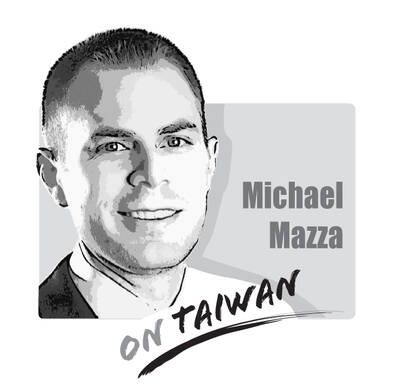Generation Z is the most online generation in history. They also have increasingly radical political views that are not always reflected in traditional media.
It is no surprise that online influencers — who run highly popular social media channels — are dominating political discourse in Generation Z’s online spaces.
Young people’s politics are being shaped by popular YouTubers, livestreamers, podcasters and other influencer personalities, who debate political positions and educate viewers on what political engagement looks like.

Illustration: Mountain People
As audiences grow and watch times increase, the question inevitably arises: Will the influencers of the burgeoning alt-media sphere become a new type of political organizer?
At first glance, this might seem comically absurd, but in the past year, most universities, institutions and political organizations have transformed into Zoom meetings. Today, the gap between a college education and a Twitch stream has significantly narrowed.
If you do not speak during an online chapter meeting of the Democratic Socialists of America, can you really be sure that you are not listening to a podcast?
There have been a number of recent events that further blur these distinctions.
In January, Riley Grace Roshong, a Baltimore, Maryland-based law student and YouTuber, livestreamed her testimony before the state Congress in support of House Bill 231, which would eliminate the “panic defense” laws, a legal strategy that allows defendants who attack or murder LGBTQ people to claim that the gender identity or sexual orientation of their victim caused them to enter into a gay or trans “panic.”
Roshong researched and drafted her testimony in collaboration with key contributors from her community of followers during a Twitch stream.
Roshong’s testimony was one in a chorus of local activists and organizations including FreeState Justice and the American Civil Liberties Union.
Another high-water mark for influencers flexing their political muscle was the Georgia Senate runoff — a key race that would determine the outcome of last year’s elections, in particular whether Democrats would enjoy a majority in both houses of the US Congress.
In December last year and January, Destiny, a professional gamer turned political commentator on Twitch, led one of the larger door-knocking campaigns of the election. Using his enormous fanbase and platform, the gamer mobilized his followers to knock on an estimated 17,500 to 20,000 doors in Columbus, Georgia, with approximately 140 volunteers.
By comparison, local groups such as the Mijente Pac had 200 paid canvassers and the New Georgia Project was seeking 200 to 300 volunteers.
These events seem to indicate something larger on the horizon. In each of these instances, influencers took a tiny bit of time out of their usual entertainment programming to make a few political asks before switching back to their regular content. Influencers are in the business of making videos, after all.
However, as online media encroach further into real-world politics, there is a mounting competitive pressure for content producers to get more politically involved. If you are going to talk the talk, you have got to walk the walk. It is not enough to sit home and criticize.
It is worth mentioning that the Proud Boys were founded by the vice cofounder, comedian and former YouTuber Gavin McInnes in 2016.
Broadcasters Cenk Uygur of The Young Turks and Kyle Kulinski of Secular Talk are among the cofounders of Justice Democrats in 2017.
Just a few years before, it was difficult to imagine that online personalities could help to shape offline organizations.
Most troublingly, the terrain of social media seems to definitively advantage right-wing politics.
While conspiracy and disinformation circulates across the whole of the political spectrum, the far right is uniquely able to manifest offline in the form of gangs or stochastic violence.
On the extreme end of this trajectory we find Tim Gionet (AKA Baked Alaska) livestreaming and taking selfies from inside the Capitol riot on Jan. 6.
The attention economy incentivizes new and dangerous levels of violent spectacle.
It is worth theorizing how these forces could be harnessed for something other than conspicuous political stunts. What we know for sure is that large online audiences, numbered in the hundreds of thousands, do not translate to the ballot box.
In 2016, civil rights activist and Twitter influencer DeRay Mckesson finished a Baltimore mayoral run with only 2.6 percent of the vote. In 2019, right-wing YouTubers Carl Benjamin (AKA Sarkon of Akkad) and Mark Meechan (AKA Count Dankula) ran for the European parliament, winning just 3.2 percent in England’s southwest and 1.9 percent in Scotland respectively.
Last year, Gen Z trucker turned TikTok star Joshua Collins earned less than 1 percent of the vote in Washington’s 10th district.
If election outcomes were purely a product of follower counts, then political parties would just recruit media personality Kendall Jenner.
The key difference between mainstream celebrities and niche influencers is the potential for social media to form hyperspecific and hyperdedicated communities. Viewers feel a strong connection to the content creators they follow and to the communities they participate in.
These audiences yield higher than average conversion rates when called upon to take action. Today there are no casual fans — everything is a cult following.
In most cases, these political influencer channels are unearthed over the course of months or years of exploring. Social media are forming accidental “pipelines” to political education and it is time to start thinking about what these pipelines lead to.
Fandoms are beginning to resemble political affiliations. Crowdfunding approximates membership dues. At their core, organizations are a list of names and addresses. Swap out newsletters for episodic content, but the actionable items remain largely the same: voting endorsements and invitations to canvas.
On an annual basis, it costs more to support a podcast than to join the Democratic Socialists of America.
Clearly, magazines did not replace political parties and social media channels will not either, but it does create room for something like an Upton Sinclair of the digital age.
In an era defined by elite corruption and institutional failure, listener-funded counterhegemonic narrators are thriving. Young viewers trust alt-media figures like Contrapoints because she does not seem to work for the elites.
Critical voices can only be trusted when they are not attached to big donors. Former New York mayor Michael Bloomberg could not buy a successful meme while he was seeking the Democratic nomination for last year’s presidential election, while supporters of US Senator Bernie Sanders’ bid thousands for free.
Social atomization and economic precarity are sending increasing numbers of people out on to the Web in search of answers, but in the post-political era, most organizations have withered or dissolved.
Perhaps members of Generation Z are flocking to online fandoms because of the lack of real-world organizations. Further compounding this, is the repellent quality of activist culture, which is largely out of touch with the needs of most people.
Meanwhile, online communities are fun and cool. Until organization becomes a normal aspect of everyday life, we should expect online communities to grow at comparatively faster rates.
So what might these new influencer communities be good for? One indication could be novelty fundraising.
In November last year, US Representative Alexandria Ocasio-Cortez and Twitch streamer Hasan Piker, along with a team of other players, including Canadian politician Jagmeet Singh, political streamers the Serfs and video game streamers including xQcOw, DisguisedToast and others, raised a combined US$200,000 for eviction defense and food pantries while playing Among Us, a popular online multiplayer game.
However, this particular model seems reminiscent of celebrity fundraisers in the cable TV era and could easily be repeated by the political establishment.
On the nationalist right, political influencers have taken to forming their own parallel events to compete with establishment parties.
Inaugurated last year, the America First Political Action Conference is an annual event intended as an off-site alternative to the Conservative Political Action Conference, a Republican stronghold.
Throughout 2019, this same group of young American nationalists coordinated to heckle and undermine public events, including those that featured political activist Donald Trump Jr and US Representative Dan Crenshaw.
Small hyper-dedicated groups are ideally suited for specific and targeted interventions.
Influencers are not organizers, but they might be soon. Perhaps they require their own distinct category.
Online communities might become a new type of crowdfunded special-interest group or think tank with a built-in spokesperson, like the People’s Policy Project, founded by Matt Breunig in 2017.
At the least, these overlapping fields are becoming more structurally similar. The key difference seems to be what the community members are asked to do. Soon, content producers might ask for much more.
If fierce online competition is driving these channels to become politically active, this can be harnessed as effective advertising and recruitment into organized political life.
It is worth thinking about these emergent pipelines now so that in 2028, we find ourselves surrounded by a new rank and file, rather than sensationalist livestreaming from the barricades.
Joshua Citarella is an artist and Internet culture researcher based in New York City.

Could Asia be on the verge of a new wave of nuclear proliferation? A look back at the early history of the North Atlantic Treaty Organization (NATO), which recently celebrated its 75th anniversary, illuminates some reasons for concern in the Indo-Pacific today. US Secretary of Defense Lloyd Austin recently described NATO as “the most powerful and successful alliance in history,” but the organization’s early years were not without challenges. At its inception, the signing of the North Atlantic Treaty marked a sea change in American strategic thinking. The United States had been intent on withdrawing from Europe in the years following
My wife and I spent the week in the interior of Taiwan where Shuyuan spent her childhood. In that town there is a street that functions as an open farmer’s market. Walk along that street, as Shuyuan did yesterday, and it is next to impossible to come home empty-handed. Some mangoes that looked vaguely like others we had seen around here ended up on our table. Shuyuan told how she had bought them from a little old farmer woman from the countryside who said the mangoes were from a very old tree she had on her property. The big surprise
The issue of China’s overcapacity has drawn greater global attention recently, with US Secretary of the Treasury Janet Yellen urging Beijing to address its excess production in key industries during her visit to China last week. Meanwhile in Brussels, European Commission President Ursula von der Leyen last week said that Europe must have a tough talk with China on its perceived overcapacity and unfair trade practices. The remarks by Yellen and Von der Leyen come as China’s economy is undergoing a painful transition. Beijing is trying to steer the world’s second-largest economy out of a COVID-19 slump, the property crisis and
As former president Ma Ying-jeou (馬英九) wrapped up his visit to the People’s Republic of China, he received his share of attention. Certainly, the trip must be seen within the full context of Ma’s life, that is, his eight-year presidency, the Sunflower movement and his failed Economic Cooperation Framework Agreement, as well as his eight years as Taipei mayor with its posturing, accusations of money laundering, and ups and downs. Through all that, basic questions stand out: “What drives Ma? What is his end game?” Having observed and commented on Ma for decades, it is all ironically reminiscent of former US president Harry